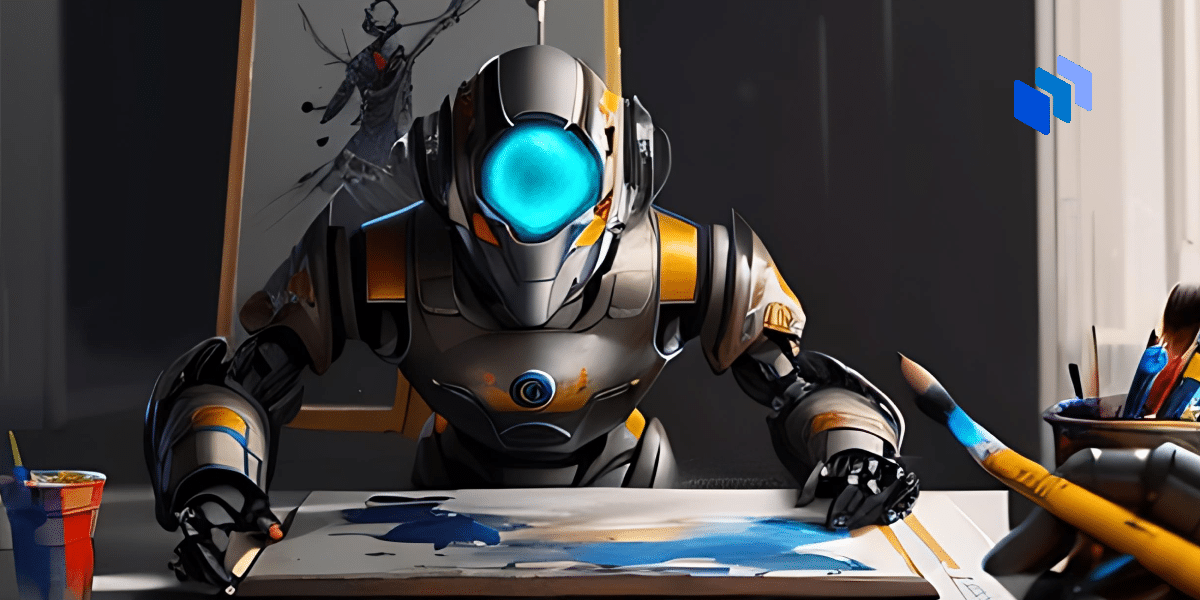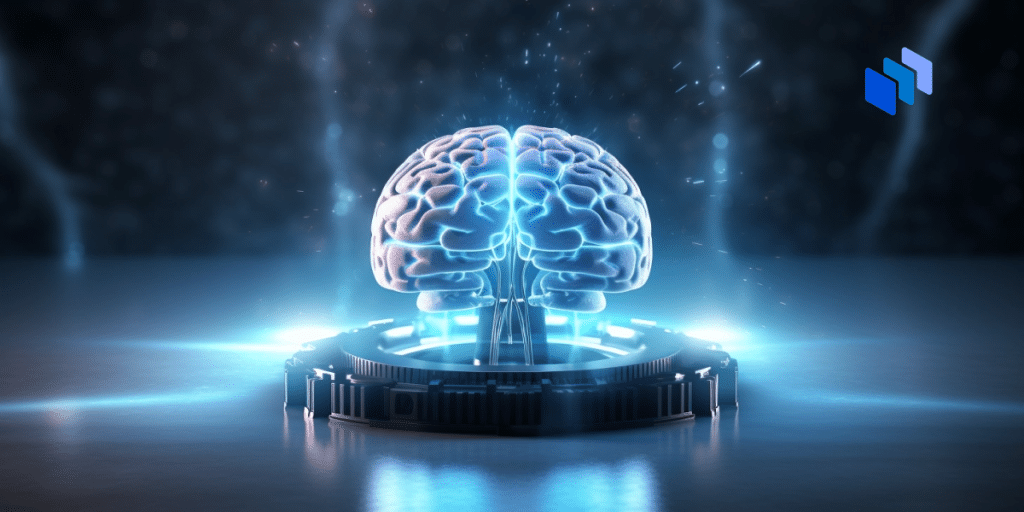The rapidly evolving use of artificial intelligence (AI) and its potential to disrupt the creative arts has sparked a fascinating debate. Now that algorithms have the capacity to generate art, a fundamental shift is underway in how we view an endeavour that has previously been the province of humans.
As AI becomes increasingly integrated into the creative process, when does human art become AI art?
This question has far-reaching implications, from the complexities of copyright law to the entertainment industry’s desire to employ AI in scriptwriting. Recent legal developments, including a ruling that AI art isn’t copyrightable, have thrust this issue into the spotlight.
AI in the Creative Process
Art and music are perceived as uniquely human skills, limited to exceptionally talented people. However, AI now allows anyone to generate a piece of art with a few prompts and clicks.
In recent years AI has made impressive strides in replicating creative tasks. AI algorithms can generate visual art, compose music, and produce articulate text. AI-generated art is being sold in exhibitions and in the cryptocurrency market in the form of non-fungible tokens (NFTs).
AI art generators use deep machine learning (ML) algorithms to analyze large datasets of artwork, learning different styles, techniques, and compositions as a basis to generate new digital pieces from simple text instructions or prompts.
However, the distinction lies in the absence of human creativity – the thought processes, intentions and emotions that inform an artist’s work.
Providing a generative AI tool with a prompt or other form of input does not equate to human creativity. AI can produce an output based on instructions, but it lacks the experience emotions, personal experiences, intent or purpose that shape human art.
Is it appropriate for someone to claim they created a piece of art that they generated by prompting an AI algorithm? Is it as valid as an art piece that was solely created by a human?
These questions are moving beyond the theoretical.
The online marketplace PromptBase sells AI prompts to generate images – including inputs that imitate copyrighted works. Bringing the debate into the mainstream, Hollywood movie and TV studios have been increasingly eager to bring AI into writers’ rooms.
With its ability to analyze vast datasets and generate content swiftly, AI is viewed as a valuable tool to streamline the creative process. However, the question of who truly owns AI-generated content and how it fits into the established framework of intellectual property (IP) law remains murky.
The Legal Dilemma
The core issue for lawyers is the level of human involvement in the creative process. In a significant legal development, a US federal judge upheld a finding from the US Copyright Office (USCO) that art generated by AI is not copyrightable.
Stephen Thaler had challenged the USCO’s refusal of his copyright application for a piece of artwork called “A Recent Entrance to Paradise”, which was created by “Creativity Machine”, a generative AI he developed. Thaler identified “Creativity Machine” as the author of the art in the application. The USCO denied the application on the grounds that it did not meet the originality requirement of the United States Copyright Act.
Copyright law has “never stretched so far” to “protect works generated by new forms of technology operating absent any guiding human hand,” the judge found. “Human authorship is a bedrock requirement.”
The USCO has stated that the “nexus between the human mind and creative expression” is a fundamental element for copyright law protection.
The ruling has implications throughout the creative industry.
In Hollywood, the use of AI has played a central role, along with job protections, pay and benefits, in the breakdown in negotiations that has led to actors and writers going on strike.
Actors are concerned that they will lose control of their voices and likenesses, lose credit, or be replaced altogether. They fear that studios will scan their images and use them – including to train new algorithms – without their consent or future payment. Meanwhile, writers are concerned that the use of AI algorithms in writing scripts could affect the credits that form the basis of their pay and awards eligibility.
The studios may also have concerns that if a script, character or, taken to extremes, an entire film is generated via AI, they may have no basis to claim copyright on it – and intellectual property is a lucrative avenue, at times a cash cow, for Hollywood.
Challenging the Limits of IP Law
The unions and studios are navigating a complex landscape and any decisions in the current dispute will likely set precedents for future contracts. This is especially challenging as AI technology continues to advance at a rapid pace.
These issues are forcing a broader discussion about the capabilities of AI and the line between generated content and human creativity. Although AI algorithms can generate art, text, and music, should their output receive copyright protection? Do they exist within the bounds of the established “fair use” doctrine, which permits the use of copyrighted work for criticism, comment, news reporting, teaching and research?
AI art generators are challenging the bounds of IP theft, having been trained on large datasets without the consent of the original artists. For example, OpenAI’s DALL-E image generator and Midjourney’s AI platform sell subscriptions, in effect profiting from the copyrighted works that populate their datasets.
Recent lawsuits by authors Sarah Silverman, Christopher Golden and Richard Kadrey against OpenAI and Meta, as well as artists Sarah Andersen, Kelly McKernan, and Karla Ortiz against Stability AI, DeviantArt, and Midjourney, claim that using their works to train AI models without their consent amounts to IP theft.
Stock photography provider Getty has also filed lawsuits in the US and the UK against Stability AI, alleging that its AI image generator Stable Diffusion is violating its copyright and trademark rights by improperly using watermarked photographs from its collection.
However, the judge in the artists’ case has said that they need to provide more detailed evidence. “Otherwise, it seems implausible that their works are involved,” as the algorithms have been trained on “five billion compressed images.”
Traditional copyright cases require claimants to prove that the infringement is “substantially similar” to their original work. This is more opaque with AI-generated works that have been composed based on a wide range of sources.
This in turn raises another concern – that artists have no way to prevent their publicly available work from being used to train algorithms.
Future Implications
The recent cases highlight the limitations of current established law in the face of rapid AI adoption. New regulations or legal frameworks will be needed to address the ambiguity raised by the interaction of human creativity and AI algorithms and provide clear guidelines for copyright and IP protection. Otherwise, the risk of disputes over the theft of original content and the infringement of artists’ rights will escalate.
As AI technology continues to advance, it will become increasingly proficient at imitating human creativity. This will raise the stakes in the moral debate surrounding the essence of creativity and what separates human art from AI output.
And the debate extends beyond copyright. It will also have implications for entry-level creative jobs in illustration, graphic design, photography, modelling and other visual arts, as they could be replaced by AI tools.
Conversely, new roles are already emerging for creators of AI prompts, and there is potential for artists to use AI tools for references to inspire their work.
For example, an artist looking to use certain shapes, textures or lighting in their work could start with an AI prompt to provide a reference for what they should look like. Or a graphic designer could use an algorithm’s problem-solving skills to inform their work on a design brief.
The Bottom Line
The question of when human art becomes AI art is complex and will only become more so as the technology evolves and adoption increases. Recent legal rulings have emphasized the significance of human involvement in the creative process for copyright protection.
The boundaries between human creativity and artificial output will continue to be challenged and redefined, shaping the future of art and IP. The intersection between creativity, AI and copyright law will remain a dynamic and intriguing space to watch – and probably one without easy answers.








